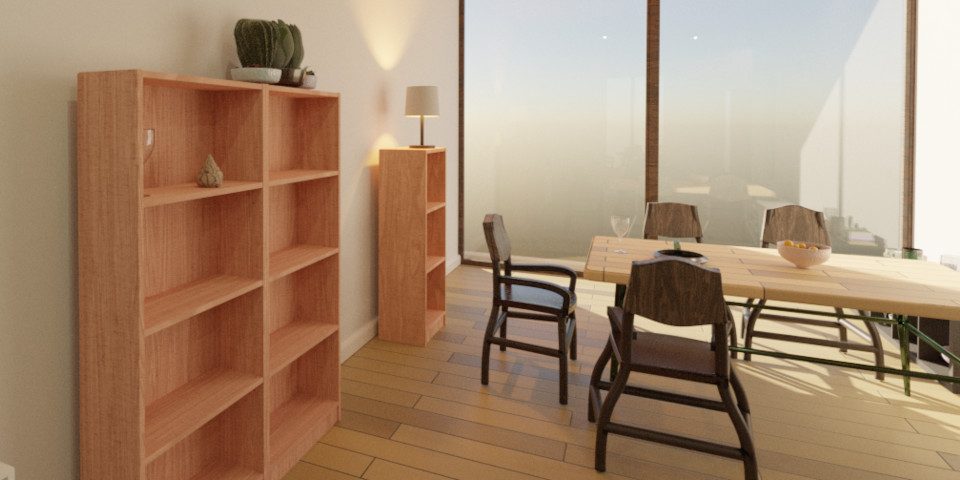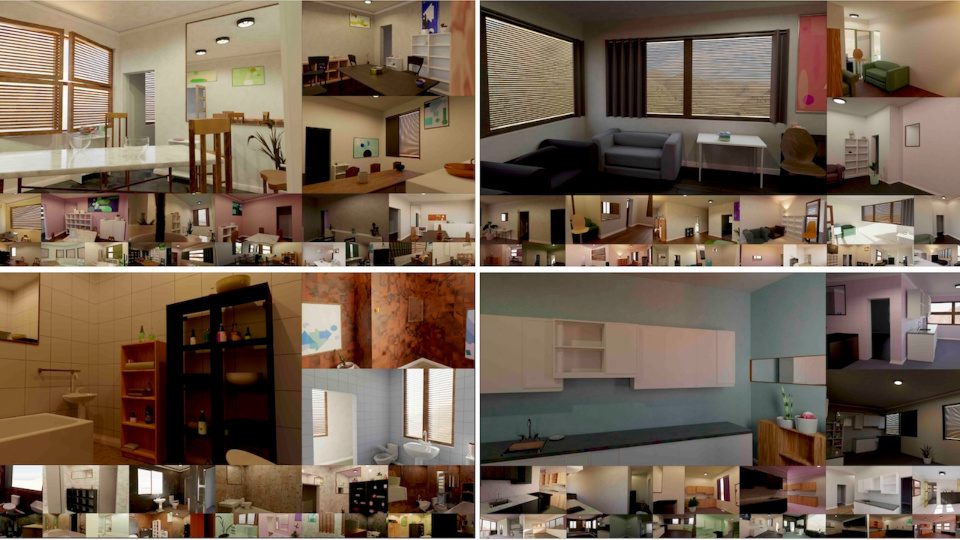Open-source tool Infinigen Indoors generates procedural 3D interiors

Researchers at Princeton University have released Infinigen Indoors, a free Blender-based procedural tool for generating interior 3D scenes.
It generates a 3D interior – from a single room to entire house – as a .blend file, complete with architectural elements, furniture and home furnishings.
Individual assets can then be exported in standard 3D file formast, including OBJ, FBX and USD, for use in other DCC apps and game engines like Unreal Engine.
The functionality is available as a preliminary release in Infinigen 1.4.0, the latest version of the open-source procedural generator for 3D natural environments.
Generate detailed 3D environments based on a set of procedural rules
First released last year, Infinigen is an open-source tool for generating 3D environments procedurally using “Math rules only. Zero AI. Just graphics.”
The original version generated 3D terrain, distributing objects like rocks and vegetation over the ground surface to create complete 3D environments.
The environments can include dynamic water, generated using FLIP fluid simulation, and particle-based rain, snow, fire and smoke.
Infinigen can also generate rigged 3D creatures, including carnivores, herbivores, birds, beetles and fish, complete with fur grooms and skin folding.
You can find more details in our original story on Infinigen 1.0.

Now generates man-made interiors as well as natural environments
Infinigen Indoors takes that workflow and applied it to man-made environments.
The toolset generates indoor 3D scenes based on a library of procedural assets including architectural elements like doors, furniture and home furnishings.
A constraint-based arrangement system arranges the assets into configurations that make sense as actual rooms; and a floorplan generator combines the rooms into entire houses, with rooms connected by passages, and floors connected by stairs.
At the minute, it’s limited to domestic interiors in houses, rather than commercial environments like shops or offices, or high-rise buildings.
You can find a tutorial on generating a room in the online documentation.
How detailed are the interiors that Infinigen Indoors generates?
The Infinigen Indoors research paper shows a range of environments generated with the toolset.
They’re relatively detailed: not to the point where you could use them as readymade architectural visualizations, but enough to be useful for ideation, or as scenes that could be refined manually for use in illustrations, motion graphics or animations.
Outside the entertainment market, the paper also shows environments exported to Unreal Engine and Isaac Sim, NVIDIA’s Omniverse-based robotics simulation system.
How easy is it to use Infinigen?
Although Infinigen began as a research project, its creators have been actively inviting contributions from the wider Blender community, and it has become more user-friendly.
In particular, it is now possible to install Infinigen as a Blender Python script, making it possible to use it interactively inside a standard installation of Blender.
Inside Blender, Infinigen runs in minimal installation mode, meaning that you can manipulate assets; but to generate a full scene, you still need to install it as a separate Python module, outside the Blender UI.
Can you use the assets that Infinigen generates in other CG software?
It is also now possible to export individual assets from the .blend file that Infinigen generates in OBJ, FBX, STL, PLY or USD format, and full scenes in USD format.
To export individual assets, Infinigen has to bake the procedural elements, so it doesn’t use Blender’s built-in exporter, and there are number of limitations.
License and system requirements
Infinigen Indoors is available as a preliminary release, as part of Infinigen 1.4.0, under a 3-Clause BSD license.
Infinigen can be installed as a Python module, or as a Python script within Blender with more limited functionality: you can find installation instructions here.
Both options support Linux and macOS, including both Apple Silicon and Intel Macs.
There is only experimental support for Windows, and only in minimal installation mode, though Windows users can run Infinigen in a Linux environment via WSL.
Scene generation is GPU-accelerated via CUDA on NVIDIA GPUs only.
Read more about Infinigen Indoors on the Infinigen project website
Have your say on this story by following CG Channel on Facebook, Instagram and X (formerly Twitter). As well as being able to comment on stories, followers of our social media accounts can see videos we don’t post on the site itself, including making-ofs for the latest VFX movies, animations, games cinematics and motion graphics projects.
